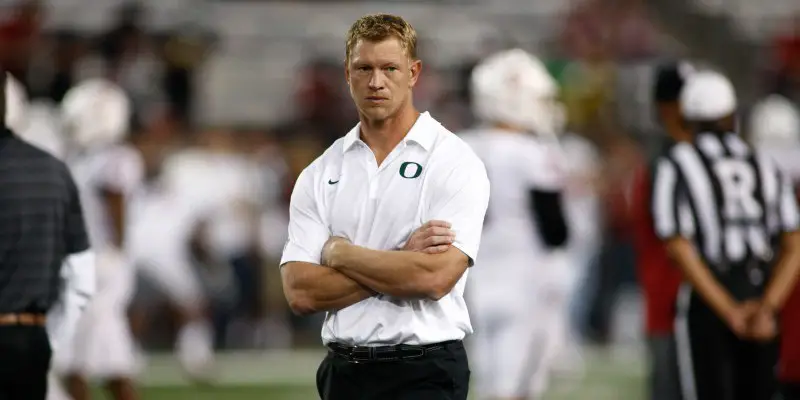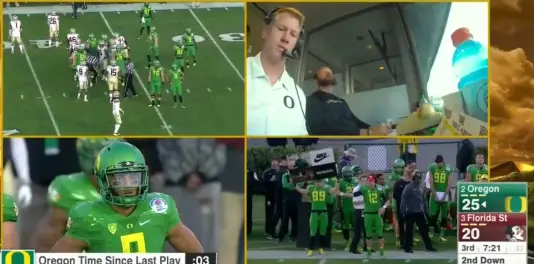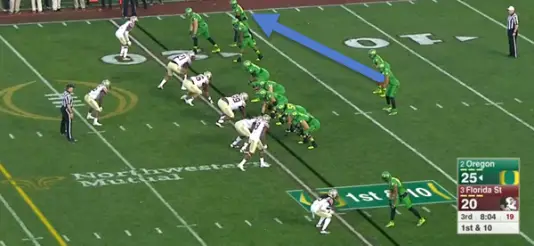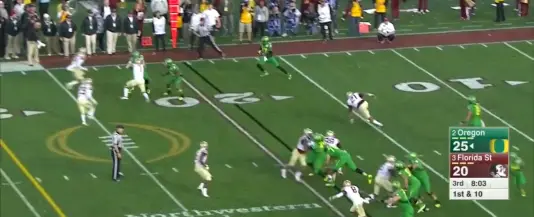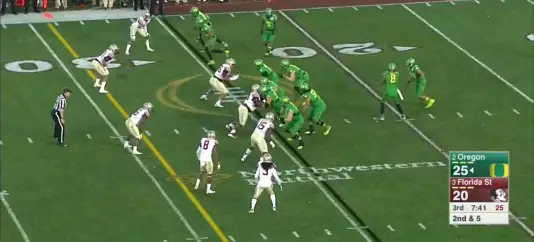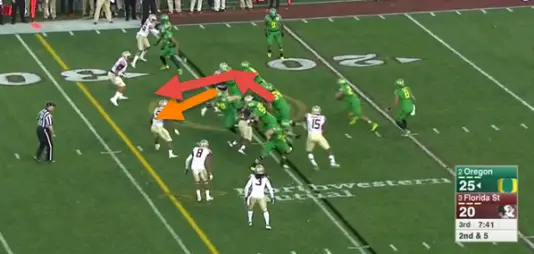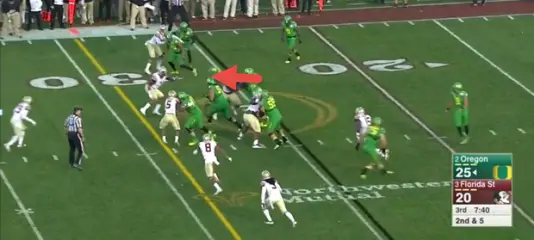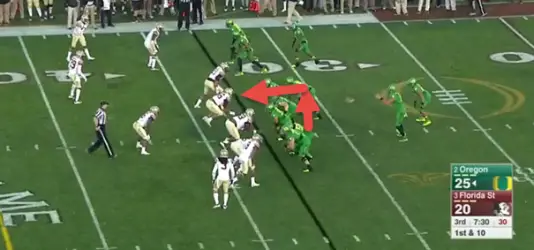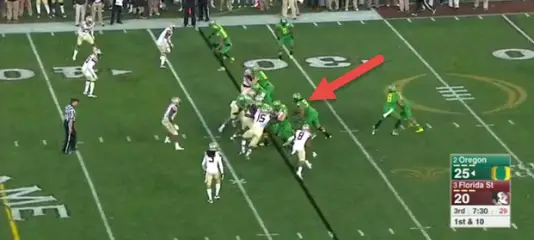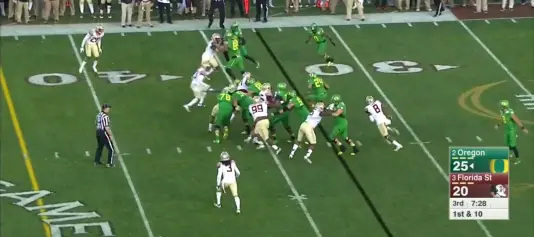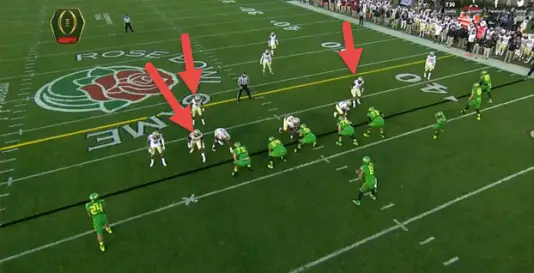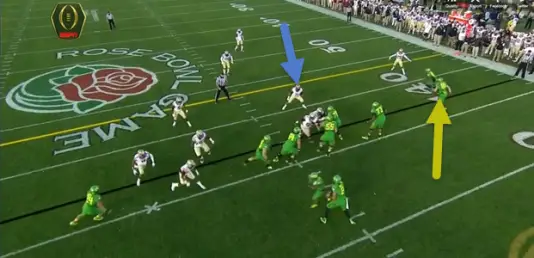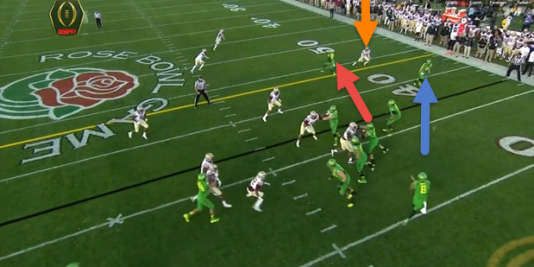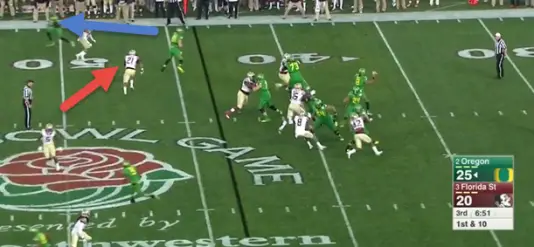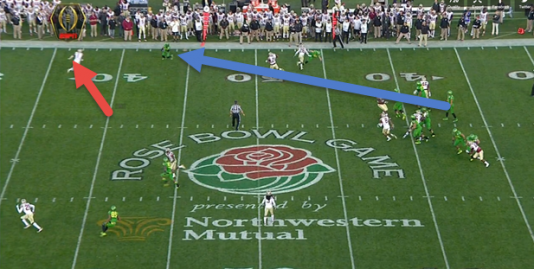When Chip Kelly left Eugene for the Philadelphia Eagles in 2013, he left two major voids in the Oregon football program. Kelly had not just been the face of the Ducks, he was also the play-caller for the renowned high-octane spread offense. As much as head coach Mark Helfrich deserves credit for leading the team to a national championship game in just his second season on the job, Ducks fans should also credit offensive coordinator Scott Frost for assuming play-calling responsibilities and keeping the offense from missing a beat.
It was Kelly who had the vision to hire Frost in 2009 as receivers coach. Frost, a national-championship winning quarterback at Nebraska, had also been an NFL safety and defensive coach. When Kelly made the hire, Frost was the co-defensive coordinator for the University of Northern Iowa. It seemed like an odd decision at the time, due to Frost’s coaching experience on the defensive side, but Kelly had the foresight to see Frost’s potential. Between 2009 and 2012, Frost clearly made an impression on Helfrich, then offensive coordinator, to earn the keys to the fast-paced Oregon offense.
It is also obvious to see that Kelly left an impression on Frost, apparent in the vast similarities between the Oregon offenses before and after the New Hampshire native’s departure. One particularly noticeable similarity between Frost’s and Kelly’s offenses is how the plays called by Frost build on each other. The trademark tempo amplifies the effectiveness of these plays by catching the defense out of position. A five-play drive in the third quarter of the 59-20 Rose Bowl victory over Florida State exemplifies this trait, as shown below.
Play 1: Bubble Screen
Frost begins the drive by using the bubble screen as a constraint play to make the defense uneasy in its soft coverage.
The Ducks line up in Trips Bunch Right (above) to the boundary side. The Seminoles have just one defensive back near the line of scrimmage over the bunch, with the rest backed up outside the frame. Quarterback Marcus Mariota (No.8) will pass the ball to Darren Carrington (No.87, blue arrow) on a bubble screen.
Mariota completes a quick screen to Carrington for a six-yard gain.
Play 2: Draw
Another trademark left by Kelly and retained by Frost is to use a similar look on back-to-back plays. Sometimes, the result is the same play. Other times, it is a completely different one designed to attack the defense where it is weak.
In this case, a draw play is exactly the kind of play that can deceive a defense fresh off of defending a pass. The Ducks are in the same Trips Bunch Right formation from the previous play and the offensive line sets up in pass protection. Surely, this is the bubble screen again, right? Wrong.
The Seminoles’ outside linebacker (above) sells out for the bubble screen, leaving the right side in a favorable matchup for the offensive line. Right guard Cameron Hunt (No.78) will peel off the defensive lineman, while left guard Hamani Stevens (No.54) pulls to the right to add an extra blocker to the play-side.
Thomas Tyner (No.24) (above) follows Hamani Stevens (No.54), who peels off a defensive lineman to pull right and help create a running lane (red arrow). Cameron Hunt (No.78) is preparing to meet a Seminole linebacker (orange arrow).
The deception of the draw gives Tyner space to run past the defensive line and up to the second level for an eight-yard gain.
Play 3: Power O
The Seminoles are now aware that the Ducks can still burn them on the ground with the Trips Bunch formation. Now, they are in tighter coverage to defend the bubble screen, and they bring more defenders into the box after the draw play. Frost seems to have anticipated this kind of look. He restores the Ducks’ numbers advantage by calling a Power Play, where Stevens will pull to the right.
Florida State (above) brings seven defenders to the box and will use press coverage.
Stevens (above) pulls to the right, behind the wall of offensive linemen.
Stevens (above) makes it to the second level, but the Seminoles do a good job anticipating the run to the right. Still, Tyner makes a nice four-yard pickup.
Play 4: Flat-Go Combo
The Seminoles commit just one defensive back on the boundary near the line of scrimmage. They are using an Overload Zone Blitz to the Ducks’ left side. The linebackers (red arrows below) are lined up outside of the guards, indicating that Florida State is prepared for the pass.
They show Trips Right, but motion Byron Marshall (No.9 above) from the boundary to the backfield. No defender follows Marshall, showing that the defense is using zone coverage.
Play-action, however, keeps the linebackers in the box. The previous two runs caused the boundary outside linebacker (blue arrow above) to freeze when he sees the play-fake and get him out of his coverage zone, allowing the underneath receiver (yellow arrow above) to open up.
Carrington (red arrow above) runs a go route to clear out the cornerback (orange arrow), while the underneath receiver, Evan Baylis (blue arrow, No.81), runs a flat route. The zone coverage obligated the cornerback to drop back and cover Carrington for a few yards, leaving Baylis open for the catch.
Play 5: Flat-Go Combo
Frost uses a different formation on the next play to run the same concept. This time, there are two receivers to the field-side and one to the boundary.
Baylis (above) is lined up as an H-back and Marshall lines up to the left.
The safety (red arrow above) bites on the flat route, having seen it on the previous play. This overreaction allows Carrington (blue arrow) to get wide open.
Mariota passes the ball to Carrington (blue arrow above). The other safety (red arrow) slips and Carrington runs past him for a 56 yard touchdown. This touchdown was the result of Frost’s deliberate play-calling over the course of the drive. The bubble screen set up the draw. In turn, that set up the Power O, which set up the passing game. It was simply a textbook Oregon Ducks drive.
Conclusion
Chip Kelly might be in Philadelphia, but his legacy still lives on in Eugene. Scott Frost is a crucial part of the Oregon coaching staff and has the keys to the nationally-renowned high octane spread offense. He deservedly garnered attention for head coaching positions like the vacancy in Nebraska and should land a head coaching position one day. Helfrich is wise to trust a gifted play-caller like Frost with immense responsibility and the payoff could be a national championship against Ohio State.
I may be in Pennsylvania, but “oh how we love to learn about your beloved Ducks!”
Joe Kearns
Oregon Ducks and Philadelphia Eagles Football Analyst for CFF Network/FishDuck.com
State College, Pennsylvania
Top Photo by Kevin Cline
Joe Kearns is a senior at the Pennsylvania State University majoring in Economics. He intends to pursue a career in the banking and financial services industries, but is also a lifelong diehard Philadelphia Eagles fan who enjoys analyzing college and pro football film as a hobby. Along with being a fan, Joe’s football knowledge comes from his days as a center, defensive tackle, and long snapper for his high school in Mt. Lebanon, Pa. Though he is a Nittany Lion, he has taken a great interest in the Oregon football team since Chip Kelly became the Eagles head coach. He loves pancakes ( and not just the breakfast food).

